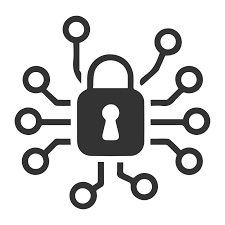Zero Trust – Definition & How to Stay Protected
- Juraj
- 19 February 2025
What is Zero Trust Security? (Quick Definition)
Zero Trust Security is a cybersecurity model that assumes no user, device, or system is inherently trustworthy, even if inside the corporate network. It enforces strict verification, least privilege access, and continuous monitoring to prevent unauthorized access. Unlike traditional perimeter-based security, Zero Trust operates on the principle of “never trust, always verify.”
🛑 How it Works (Principles of Zero Trust Security)
1️⃣ Verify Every User & Device – All users and devices must authenticate before accessing resources.
2️⃣ Least Privilege Access – Users and applications receive the minimum level of access necessary to perform their tasks.
3️⃣ Microsegmentation – The network is divided into smaller, isolated segments to limit movement in case of a breach.
4️⃣ Continuous Monitoring & Adaptive Security – User behavior is constantly analyzed for anomalies, and access policies adapt dynamically.
5️⃣ Multi-Factor Authentication (MFA) – Requires at least two authentication methods (e.g., password + biometrics) to verify user identity.
🎯 Common Examples & Use Cases
| Feature | How It Works | ✅ Benefit for SMBs |
|---|---|---|
| 🔑 MFA & Identity Verification | Requires multiple authentication steps (password + one-time code) | Prevents unauthorized logins, even if credentials are stolen |
| 🚪 Least Privilege Access | Employees can only access data relevant to their role | Reduces insider threats and accidental data leaks |
| 📶 Microsegmentation | Limits lateral movement by isolating networks | Prevents attackers from moving between systems if breached |
| 🔍 Continuous Monitoring & AI-Based Security | AI tracks abnormal behavior and flags security risks | Detects threats in real time before they escalate |
| 🏢 Cloud-Based Zero Trust Network Access (ZTNA) | Replaces VPNs with secure, identity-based access to cloud apps | Provides secure remote work without exposing the whole network |
Why is This Important for Small Businesses & SOHOs?
Small businesses and SOHOs are frequent cyberattack targets due to weaker security defenses. Traditional VPNs and firewalls alone are no longer enough, especially with remote work and cloud applications. Implementing Zero Trust Security prevents unauthorized access, reduces insider threats, and ensures compliance with regulations like GDPR, HIPAA, and NIST. By enforcing least privilege access, strong authentication, and continuous monitoring, SMBs can mitigate ransomware, phishing, and data breaches without requiring large IT teams.
❓ FAQs
🔹 Does Zero Trust Security replace firewalls?
No, but it enhances them by adding identity-based access controls, monitoring, and microsegmentation to improve overall security.
🔹 Is Zero Trust Security expensive to implement?
Not necessarily. Many cloud-based ZTNA solutions are affordable for SMBs and eliminate the need for costly on-premise VPNs.
🔹 Do I need Zero Trust if I already use a VPN?
Yes! VPNs only secure connections but do not control access inside your network. Zero Trust ensures every access request is verified and monitored, even after logging in.
🔗 Related Terms
- Multi-Factor Authentication (MFA)
- Zero Trust Network Access (ZTNA)
- Identity and Access Management (IAM)
Additional Resources
📺 YouTube Video: Zero Trust in 5 Minutes
NIST Zero Trust Architecture (SP 800-207)
Microsoft Zero Trust Security Guide
